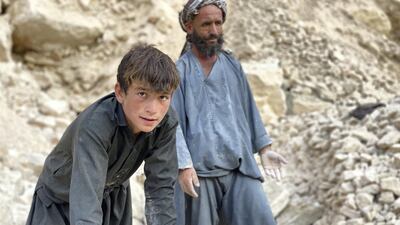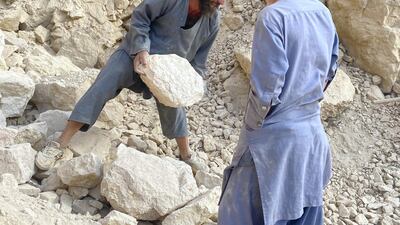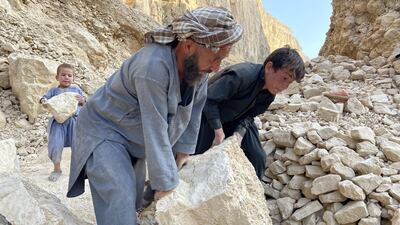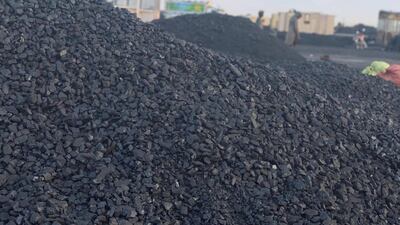For nearly four years, 16-year-old Ali Mohammad Reza put on a plastic helmet fitted with a small battery-powered torch and headed into the Dar-e-Sof coal mines of Samangan province in northern Afghanistan.
He was one of hundreds of youths who risk their lives working in mines across the country. Children, some as young as 4, are employed because they are able to squeeze into small spaces underground and extract the "black gold", a primary source of fuel in Afghanistan.
Mohammad said he would help to dig a tunnel tall enough to lead a donkey into and "continue digging until we hit a rock or dead end".
Mohammad's younger brother, Ali Reza, was only 10 when he joined his sibling in the mines two years ago.
“I worked with people younger than me, some were only 8 years old,” he said.
“They would send us to extremely tiny spots to dig, because adults wouldn’t fit there. In some places, even donkeys wouldn’t fit so the only option was to send us kids.”
The brothers were paid between 6,000 and 10,000 afghanis ($78 to $130) per month and were the only breadwinners in their family.
They left their jobs at the start of the Covid-19 pandemic after several accidents at the mines. They were also suffering health problems, including breathing difficulties.
“The deeper you go, the more you are exposed to these very harmful gasses. It was very hard to breathe and it made our heads hurt. I couldn’t sleep at night. I would have body pains and nausea,” Mohammad said.
He said injuries were common and there were times he would remain in bed for weeks while he recovered.
The introduction of machinery to speed up the digging meant the work was increasingly dangerous and several mines in Samangan collapsed in the past year.
“This particular machine vibrates the whole mountain over the mines, which makes the risk of collapse very high. I lost many friends in the last collapse. It was then that we decided to leave,” Mohammad said.
He is looking for a new way to support his family, while Ali has gone back to school.

But Abdul Fatah Ahmadzai, spokesman for the Afghan Labour Ministry, estimates there are still 2.3 million children working as labourers in the country. Officials suggest that about 300 children aged 16 or younger are employed in Dar-e-Sof alone.
Financial hardship forces hundreds of children to remain in the workforce, especially in the mining sector where they are exploited for their size.
Mohammad Naeem, 45, who is from Samangan, works in the mines alongside his two sons – Faizmad, 16, and Razmad, 4.
"This is the only option. There is nothing else for me to do to support our family of 10," Mr Naeem said.
His job involves using gunpowder to blast parts of the mountain.
“I have been injured so many times. Look at my hands, I hardly have any nails left. I have injuries all over my body,” he said.
As he spoke his younger son, who is less than a metre tall, carried a rock across the field.
Despite the risk of life-altering injuries or even death, Mr Naeem said he had no option but to pass on the trade to his sons. Faizmad dropped out of school to begin work, while Razmad is unlikely to be enrolled anytime soon.
“This work can’t be done by just one person. Together we make around $8 to $9 per day, which helps us survive and feed the family,” Mr Naeem said.
Years of increasing poverty normalised child labour in the country, but the effects of the pandemic means more families feel forced to send their kids to work, Mariam Atahi, spokeswoman at Save the Children in Afghanistan, said.
Ms Atahi cited World Bank data and said child labour was increasing because about 64 per cent of the country lived in poverty.
“It is very concerning and overwhelming to hear from children who are working in mines instead of being in school. They are another generation who are losing their childhood,” she said.
The Afghan government passed laws to stop child labour but had been unsuccessful in enforcing them, especially in the mining sector.
The Taliban control large portions of the mining regions in the north, or block the trade routes from these areas and collect taxes from businesses.
Mine owners continue to flout safety regulations and labour laws to maximise profit in the absence of government control.
“It is the responsibility of the security agencies to prevent child labour in the mining sector. Many of the mines are illegal,” Mr Ahmadzai said.
“Another 8,000 children work in brick kilns in Kabul, Nangarhar, Herat, Mazar and Kandahar.”
Ms Atahi urges the government to implement the law more strictly, while also advocating for stronger support for the children. “This is a good beginning in protecting children who were exploited for labour or trafficked. We are also advocating at the national and international levels to provide assistance to those who’ve lost their guardians due to war to ensure they are not forced to work as child labourers, and instead stay in school,” she said.
“If the Afghan government and international community do not pay attention to this, we will lose a generation who can be a part of progress and development in Afghanistan,” Ms Atahi warned.
For Reza, quitting the mines and rejoining school, although a difficult financial decision, has brought hope for a brighter future. “I want to focus on my studies, and complete my education and be doctor someday,” he said, sitting across from his brother who will continue to seek work to support his siblings’ aspirations.






